Continued from Page 1
Part II: Retired LED EDS units
Transit Media
| EDS Model | Transit Media |
| EDS Controller | Transit Media |
| Retired Buses | Original: • Volvo B10M Mark IV (DM3500) – 1 unit (SBS2779A / trial) • Volvo B10TL (CDGE) – 1 unit (SBS9889U / demonstrator) • Volvo B10TL (Volgren) – 1 unit (SBS9810X) • Dennis Trident – 20 units (all) |
Aesys Libra
| EDS Model | Aesys Libra |
| EDS Controller | Aesys KC640-USB |
| Retired Buses | • MAN A95 (Euro V) – 1 unit (SMB5888H / demonstrator) |
Flip-Dot EDS
Hanover
| EDS Model | Hanover (Flip-dot) |
| EDS Controller | Hanover |
| Retired buses | Original: • Mercedes-Benz O405 (Hispano NAC/CAC) – 73 units (all) • Mercedes-Benz O405G (Hispano MkI) – 57 units (all) |
LAWO
| EDS Model | LAWO (Flip-dot) |
| EDS Controller | LAWO |
| Retired buses | Original: • Mercedes-Benz O405 (Hispano OAC) – 235 units (all) • DAF SB220 – 50 units (all) • Dennis Lance (Volgren) – 2 units (all) • Hino HS3KRKK – 11 units (all) • Nissan Diesel U31RCN – 50 units (all) Replacement: • Mercedes-Benz O405 (Volgren) – 1 unit (Side EDS only) |
LAWO ALUMA
| EDS Model | LAWO ALUMA (LED-illuminated flip-dot) |
| EDS Controller | LAWO |
| Retired buses | Original: • Mercedes-Benz O405 (Volgren) – 15 units • Mercedes-Benz O405G (Hispano Habit) – Qty unknown • Mercedes-Benz O405G (Volgren) – 1 unit (demonstrator) Replacement: • Mercedes-Benz O405 (Hispano OAC) – 3 units • Mercedes-Benz O405 (Hispano NAC/CAC) – 1 unit |
TwinVision LeDot (Transit Media)
| EDS Model | Transit Media TwinVision LeDot (Flip-dot) |
| Retired buses | Original: • Mercedes-Benz O405G (Hispano MkII) – 29 units (all) • Mercedes-Benz O405G (Hispano Habit) – Qty unknown • Mercedes-Benz O405G (Volgren) – 20 units (all) • Dennis Lance 245 (UK) – 20 units (all) • Hino HS3KRK – 1 unit (TIB905Y / demonstrator) Replacement: • Mercedes-Benz O405 (Hispano OAC) – 2 units Retrofitted: • UMW-Dennis Lance 211 & 245 (DM) – 49 units (all but 1) |
Mobitec MobiDOT
| EDS Model | Mobitec MobiDOT (Flip-dot) |
| EDS Controller | Mobitec Zebra 300TD |
| Retired Buses | • Scania L113CRL (PSV) – 12 units • Scania L113CRL (ELBO) – 15 units • Scania L94UB – 1 unit (SBS2888T / demonstrator) • Volvo B5RLE Hybrid – 1 unit (SBS8002T / demonstrator) • Volvo B10BLE – 1 unit (SBS1688K / demonstrator) • Volvo B10MA Mark IV – 1 unit (SBS998Y / demonstrator) • Volvo B10M Mark IV (PSV/Soon Chow) – 10 units • Volvo B10M Mark IV (Superlong) – 1 unit (SBS997A / demonstrator) • Volvo B10TL (Volgren) – 1 unit (SBS9888Y / demonstrator) |
BKB Electronica
| EDS Model | BKB Electronica |
| Retired Buses | DAF SB220 (Hispano) – 34 units |
Miscellaneous
Volvo B10M MkIV DM3500
- SBS2779A (registered April 1999) was originally equipped with an orange Transit Media Electronic Display Signage (EDS), which was removed sometime in 2010, prior to redeployment to cross-border routes.
- SBS2729U once had a Mobilis Media LCD screen that replaced its side destination display, installed around 2007. However, it was limited to deployment on Service 518 due to its inability to display other bus routes and was later removed.
TIBS Give Way To Buses trial
In April 1999, TIBS launched a rear-facing EDS on two buses as part of a six-month trial, deployed on Bus Service 82 and 864.
The 37.5 cm by 44 cm display is located at the back of the bus. A message in red blinks to ask motorists to give way when the buses move out of bus lanes and filter across lanes to turn right.
The display also encourages road courtesy. A “Thank you” message flashes for about seven seconds after a bus has successfully changed lanes, or moved out a bus bay. At other times, it simply shows the bus service number.
Pros and Cons
In contrast to physical destination signs which they replaced, EDS units are electronically reprogrammed, which eliminates the need to fabricate new acrylic signages whenever a new bus service is launched, or existing bus service is amended.
By containing the route details of all bus routes, EDS units make it easier for bus operators to dispatch buses. With physical destination signs, buses must carry all the destination signs for the bus routes they are scheduled to ply, which makes it challenging for bus interlining and redeployments in an emergency. It is also difficult to keep track of the whereabouts of plastic destination signs, given that these signs were stored at bus depots, bus interchanges, or stashed away onboard individual buses.
For Bus Captains, switching between bus services (or different directions of the same bus service) is conveniently done through the EDS controller, without having to leave the driver’s seat. In contrast, physical destination signs had to be manually changed by Bus Captains between trips, a tedious process and more so for double-deck buses. Bus Captains also have the added task of carrying these destination plates around between their shifts when required.
For commuters, EDS units are more clearly visible at night with the benefit of high contrast. They also display the bus’ direction and roads served alongside the bus service number, which aids in identifying and boarding the right bus. In contrast, most physical destination signs only print the route number at the front, and the bus’ direction at the side.
Furthermore, EDS units allow bus operators to display special messages, which are often seen during festive occasions or during large-scale bus diversions. Special messages are occasionally programmed in Chinese, Malay and Tamil.
EDS units also have their disadvantages, the first of which is cost. It is far more expensive to purchase than physical destination plates, and especially so for early adopters of the technology, like TIBS. However, the decreasing cost of electronics over the years have made EDS units relatively more affordable.
As electronic devices, EDS units require maintenance when faults occur, which also adds to maintenance costs by having to diagnose and repair them. In addition, EDS units have a limited lifespan which may be shorter than that of the bus itself. This was evident in the 2000s when SMRT had to replace the flip-dot EDS units of many TIBS buses, and only a small number of these buses carried their original EDS until the end of their lifespan. However, modern LED EDS units use no moving parts and have a longer operating lifespan.
External Links & References:
- Electronic signs on Tibs buses a hit with S’poreans | Straits Times | 21 November 1994
- Electronic signs for buses | Straits Times | 29 April 1999
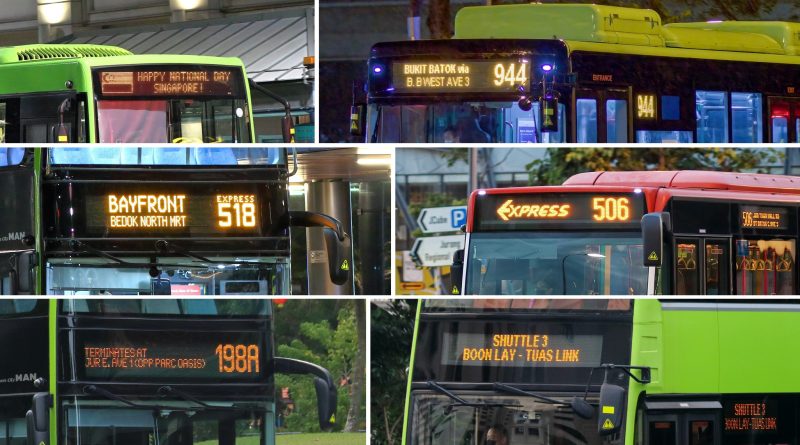
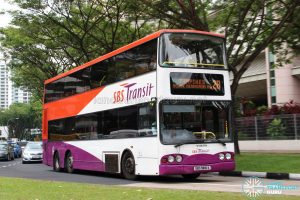

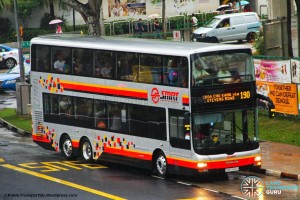
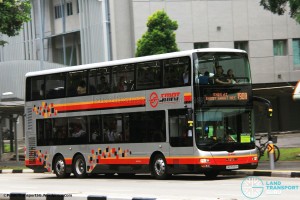

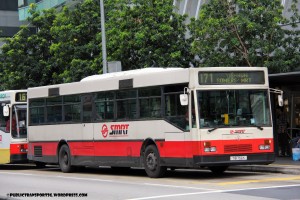
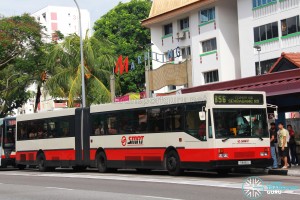
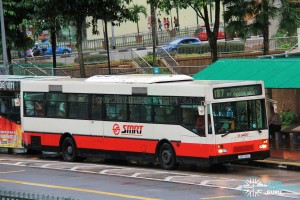
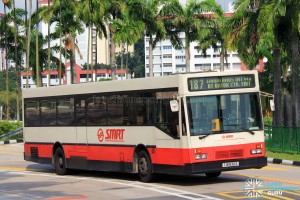
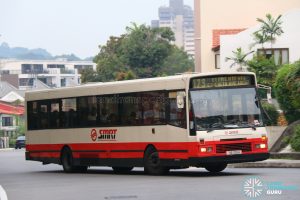
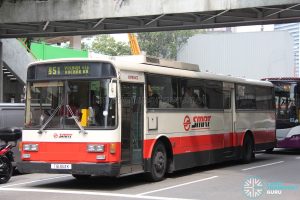
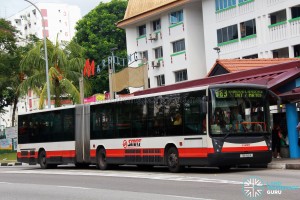
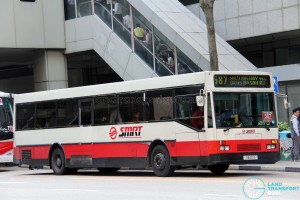

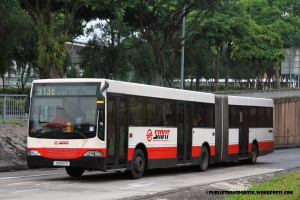
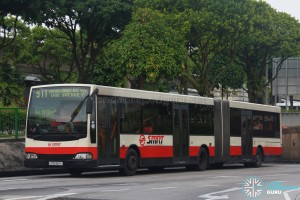
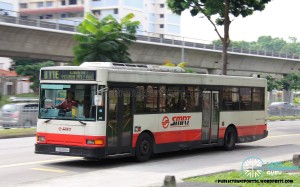
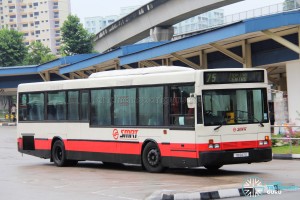
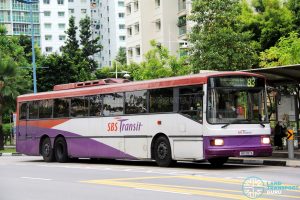
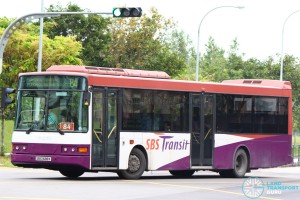
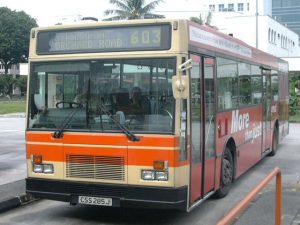
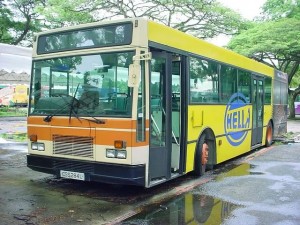
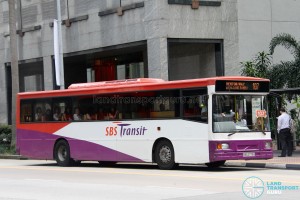
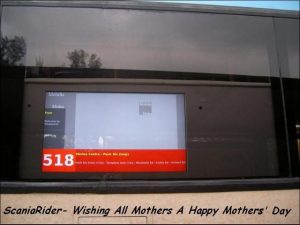
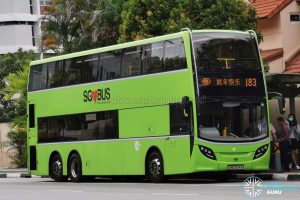
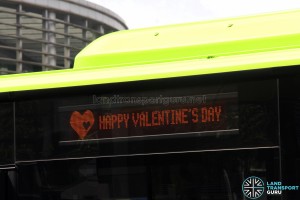
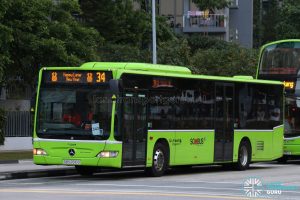
If the EDS is not working, the BCs will be using a plastic physical destination signs temporaily.
Wonder if all EDS only have orange on its display or can tune to other colors?
If have other color options, I’d like different color coding for our bus route numbers, perhaps can identify the operator of the route, and especially Red and White plates for SBS Transit (may be tough for the BC to flip the signage, in a loop route)
Hello Mr Tham, it probably depends in the future if they can allow mixed-colour EDS for future buses. Other words, SG4002G and SG5999Z already got coloured EDS
Hi SMB3587P the Ed’s was in service 603 and was not in service